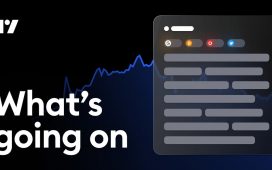The energy industry needs to adopt open source AI software, and the collaborative processes used to create it, to satisfy demand for energy created by the growing use of … artificial intelligence.
That’s the not entirely self-serving argument at the core of a new report from the Linux Foundation Energy, aka LF Energy, an initiative to promote the use of open source software in the energy sector.
The document points out that “power used to flow from largescale dispatchable generation units to passive end users through centrally managed transmission and distribution networks.”
Today, generators come in many more shapes and sizes and types, meaning more orgs must work together to keep electrons moving. While these distributed systems the industry uses already employ plenty of sensors, IoT tech, and edge compute, the growing complexity of the grid and its inputs mean AI is now increasingly being used to manage it.
AI is, of course, also driving demand for energy thanks due to the massive datacenter builds under way to run such workloads. Those new facilities themselves create the need for more resilient, higher-capacity energy infrastructure.
AI, under open source license, is thus prescribed to remedy the energy demand problems created by AI (alongside other watt-squandering activities like cryptocurrency mining, online advertising, and social media-driven digital content consumption).
“The energy sector is going through a fundamental transition,” Alex Thornton, executive director of LF Energy, told The Register.
“It’s the biggest change that we’ve seen in energy and electricity since maybe the invention of the electric grid. And a major part of that transition is digitalization.”
The biggest change we’ve seen in energy and electricity since maybe the invention of the electric grid. And a major part of that transition is digitalization
Adding more digital technology to energy infrastructure, Thornton explained, means addressing current constraints around transmission to make it easier to bring new data centers online, to hook up and charge electric vehicles, and deploy virtual power plants – a collection of energy resources connected together.
All of which needs data.
“Digitalization is a key aspect of this energy transition,” said Thornton.
“And then as we pursue this path to digitalization, we have this deluge of data. And really the only way to make good use of it is through the emerging tool of AI. And so this is where AI fits into this whole digitalization story.
“Now, the reason why we pursued this white paper as LF Energy and thinking about it as open source is if you accept that the energy transition is really a digital energy transition, then it logically follows that open source has to play an important role because open source has emerged as the de facto way for modern technology to be built in a collaborative manner.”
LF Energy sees benefits in open code and in the collaborative model that has been adopted by open source projects. As energy generation infrastructure becomes more distributed, the Linux group posits that open source collaborative practices for coordinating and scaling distributed entities and initiatives represents a better organizational template than traditional industry consortia.
An open source approach also provides vendors with a way to collaborate that doesn’t run afoul of competition rules. And it can help make costs more manageable while avoiding redundant efforts across organizations through shared projects. What’s more, the report argues, open source practices make technical talent more accessible to small organizations through their participation in projects with other stakeholders.
Making the case
The report does not include the word “hallucination” – a common term to describe the tendency of AI models to invent responses to questions not covered in training data. Rather than dwell on AI risks, the report focuses on how aspirational goals for the energy sector – less carbon emission, better use of digital technology, and decentralization – can best be realized through the application of artificial intelligence, which here refers to the broad set of predictive machine learning applications and not just guardrail-tamed chatbots.
“We hit on that in terms of trust and compliance,” said Thornton. “If you’re using AI in mission critical infrastructure, you need to be able to trust that it’s going to do the right thing. So [with open source] you have transparency into how it works and the data that was used to train on. That’s how we think open has a role to play in inspiring that trust and addressing the issues for things like hallucinations.”
As the report puts it, “Open source fosters transparency, security, and trust, which will streamline meeting [privacy and critical infrastructure protection requirements] and those of AI regulations (for example, ‘high-risk systems’ in the EU AI Act).”
The report contends that open source software and open source style collaboration can help energy companies with AI use cases like load forecasting, simulation and optimization, asset management, long-term planning, AI-assisted decision-making, and decentralized energy management at the grid’s edge.
“If the energy industry does not apply the best practices from other sectors and leverage open source strategically, it will not deliver on the promises and potential of AI with speed and scale,” the LF Energy report argues.
“Open source is the key practice that turns hype into reality.”
Open source is the key practice that turns hype into reality
The US Department of Energy’s April 2024 report [PDF] titled “Potential Benefits and Risks of Artificial Intelligence for Critical Energy Infrastructure” addresses the potential upside and downside of AI more directly. The DOE report also avoids the term hallucination, but uses an alternative, “extrapolation,” to describe the unexpected or inaccurate output that can follow from a machine learning model making predictions beyond its training data.
Extrapolation is one of four risks cited in the DOE’s “unintentional failure modes of AI” category. The others include: Bias, misalignment, and the energy use of AI.
For LF Energy, the issues with AI, the benefits and harms, can best be handled with open source software, pointing to Meta’s open source Llama model family and the tools distributed on model-mart HuggingFace as alternatives to the proprietary software from the likes of OpenAI and Anthropic.
The open source model, the LF report says, “provides exclusive benefits to AI and data, such as fairness (methods to detect and mitigate bias in datasets and models), robustness (methods to detect alterations and tempering with datasets and models), explainability (methods to enhance persona’s or role’s ability to understand and interpret AI model outcomes, decisions, and recommendations), and lineage (methods to ensure the provenance of datasets and AI models).”
We note that many of the corporate funders of the Linux Foundation, such as AWS, Google, Meta, and Microsoft, have made substantial investments in AI. ®












